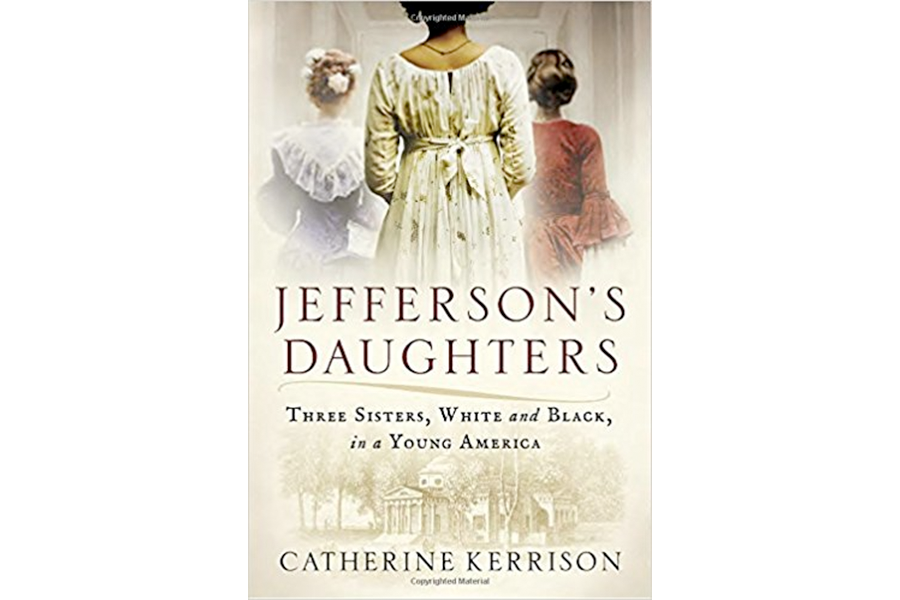'Jefferson's Daughters' tells the story of three of Thomas Jefferson's daughters – white and black
When Thomas Jefferson, recently widowed, was appointed minister to France in 1784, he brought his eldest daughter, 11-year-old Martha, with him. Martha thrived in Paris, where, to her father’s distaste, aristocratic women were well educated and vocal about their political opinions. Several years later he sent for Martha’s sister Maria, directing his 14-year-old slave Sally Hemings to accompany the younger girl, as her maid, on the long journey across the ocean. Paris would have been revelatory for Hemings, too: According to Jefferson’s records, she received wages for her work, and she likely would have been able to win her freedom there had she petitioned for it.
But as Villanova University historian Catherine Kerrison recounts in the absorbing and affecting Jefferson’s Daughters: Three Sisters, White and Black, in a Young America, in 1789 Jefferson and his party returned to the nation he’d helped found. Martha married at 17 and eventually settled with her family at Jefferson’s Virginia estate, Monticello. Hemings, 16 years old and pregnant with her master’s child, returned to life as a slave there, although according to Kerrison, she had first ensured that she and her family members would be “a caste apart” and secured a promise from Jefferson that their children would be freed at the age of 21.
Jefferson and Hemings had four surviving children, one of whom was a daughter, Harriet, born in 1801. Kerrison’s book closely examines the lives of Martha, Maria, and Harriet, comparing the different possibilities open to them and the limits they all faced as women in post-Revolution America.
Jefferson’s priority for his legitimate daughters and, eventually, granddaughters was, Kerrison writes, that they be able “to sing, dance, draw, and converse – that is, to be pleasing to men.” In a letter he wrote young Maria from Paris, Jefferson warned her not “to go out without your bonnet because it will make you very ugly and then we should not love you so much.” Martha had 11 surviving children, six of whom were girls. Her sophisticated Parisian education was largely wasted on her duties as a Southern plantation mistress, but she devoted herself to teaching her daughters a curriculum typical of boys’ education at the time. (Maria, meanwhile, suffered a fate similar to her mother, who buried several children and died young following childbirth; Maria died at 25 after a third difficult childbirth, and only one of her children lived to adulthood.)
It is heartbreaking to read Martha’s daughters’ letters, in which they frequently dreamed of having time to study. One daughter, Mary, yearned to return to her “precious studies,” but couldn’t figure out how learning Latin “would be compatible with [her] house keeping duties.” Another, Cornelia, complained of “books lying covered with unmolested dust” when it was her turn to supervise the house slaves at Monticello. By this time their grandfather had founded the University of Virginia, but he never would have permitted girls, even his own intellectual granddaughters, to attend.
The evidence – much of it from an oral history Harriet’s brother Madison gave late in his life – suggests that the daughter of Jefferson and Hemings, upon being freed, settled in Washington, where she changed her name, lived as a white woman, and married and had children with a white man. (She was seven-eighths white; her mother was one of six children born to slave Elizabeth Hemings and Jefferson’s father-in-law, John Wayles, making Sally not just Jefferson’s slave but his late wife’s half sister.)
Kerrison makes a heroic effort to learn more about Harriet and find her descendants, but in order to succeed in passing, Kerrison writes, Harriet “obliterated her historical tracks.” Once she left Virginia she likely never risked seeing her family again. Jefferson’s records establish that he facilitated her departure from Monticello, but he didn’t give her manumission papers, probably to avoid stoking the rampant rumors that he had fathered children with Sally Hemings. If her identity had been discovered, she would have been at risk of being returned to a life of slavery, along with her children.
Like all great histories do, “Jefferson’s Daughters” brings its period vividly to life, a credit to Kerrison’s exhaustive research, her passion for her subject, and her elegant writing. It is unfortunate that so much remains a mystery. Did Harriet’s husband know her secret? Was she consumed by the fear of discovery? Still, how fascinating to contemplate that, as Kerrison observes, “in expanding the boundaries of the life into which she had been born, she was spectacularly successful, arguably even more so than the privileged Jefferson … women had been.”






